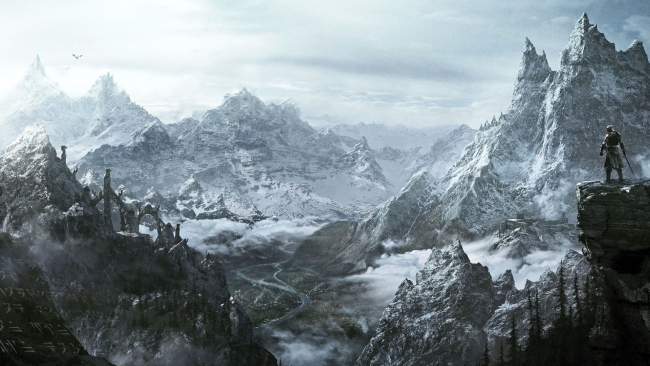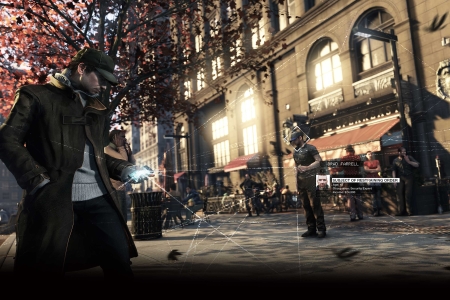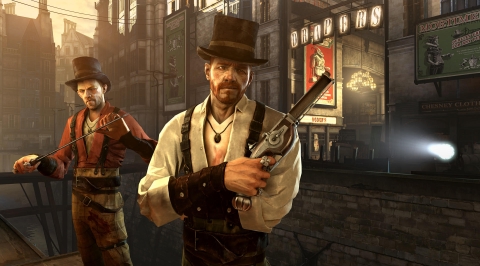The New Frontier of Wonder in Games

Everything is new. Everything is huge, and you’re so tiny. You don’t know how most things work, so even minute details of everyday things like spoons, light switches and cars seem like miracles.
Over time you get bigger, and things become less huge and majestic. By now you’ve eaten soup, changed a light bulb and driven on the highway – it takes more to challenge your imagination. It takes more to activate your sense of wonder.
The same is true of games. The first time you run around in a truly huge open world, it’s an amazing feeling. Now, with so many worthwhile games sporting gigantic worlds, the sense of novelty has been diluted. Even graphical improvements no longer impress as they did in the days when generational shifts allowed for massive increases in quality.
Today, incremental visual improvements are to be expected, and arguably no increase in graphical fidelity will register as a game-changer until we finally attain photorealism.
Dig Deep
But wonder isn’t a lost cause – it’s just more elusive. The new frontier of wonder in games is no longer about what looks good on the outside, but what feels right on the inside. The new frontier of wonder in games is about depth.
It’s about depth of interaction. New and deeper ways of interacting with systems and people through games grab our attention in a completely unique way. The meaningful interactions of Journey and the multitude of possibilities in Minecraft have catapulted those games to heights of success the creators didn’t dare dream of.

The intriguing promise of Watch Dogs to allow players to modify the inner workings of a city as they play, or the mech-assisted, parkour-infused fast FPS action of Titanfall have piqued gamers’ interest not because of their visual fidelity, but because they’re offering new ways to engage with games that we haven’t quite done before.
It’s about depth of character. The Walking Dead succeeded in creating meaningful characters by intelligently weaving appropriate gameplay sections throughout a well-crafted story, instead of cramming hackneyed story arcs around proven gameplay mechanics cherry-picked from other genres.
The Last of Us expanded on both character and mechanics in concert, resulting in a highly authored experience that benefited from both scripted and user-directed sections. And of course, Portal flourished in a pared-down production that clearly threw the spotlight on your constant tormentor.
It’s about depth of insight. For some, the ending sequences of Brothers elicited a profound reaction impossible to reproduce in any other media. The off-kilter simulation offered in Prison Architect aims to make you feel at least a little uncomfortable with the subject matter of what you’re pretending to do. And the confusion/self-reflection/existential game crises brought about by playing The Stanley Parable turns the magnifying glass on games themselves.
Yet all of those things are pretty hard to do. So more often than not, ambitious games err on the side of what has gone before, resulting in more games that seem eerily familiar – resulting in even more diminishing wonder returns.
Things like:
The pursuit of spectacle. Players burn through huge (and expensive) set pieces at such a rapid rate, it simply isn’t sustainable to rely on spectacle alone. Of course, now that massive mega-scaled games have become the standard, gamers continue to buy them in droves – but at this point, the super-sized playing fields or scripted battlegrounds no longer instill a sense of wonder. They’re just what’s expected.

The pursuit of realism. It’s been done so much that there’s no longer much novelty in diving into a ‘lifelike’ world. Stylized realities like the world of Dishonored or Infamous invoke more feelings of inspiration and awe because they’re driven by the pursuit of creativity and artistic beauty over relying on veracity for its own sake.
The pursuit of technical wizardry. Technical prowess alone no longer means what it used to. Widespread middleware tools and overall technological advances have raised the bar much higher at the cost of reducing the value of honest-to-god feats of engineering. In today’s games, any technical features must serve the game, and not the other way around.
The Future Is Filled with Wonder
As the slow implosion of triple-A studios continues and more developers are cast out in the indie wilderness, the scrappy startups with few resources that result will have little other option than to continue developing for depth instead of pandering to surface appeal. Ironically, as this trend continues, necessity will force these smaller companies to adopt, perfect and advance these techniques to attract and inspire gamers.
So if you’re bored by the latest multi-million dollar blockbusters, just hold on and keep playing. The games of the future will be filled with wonder.
